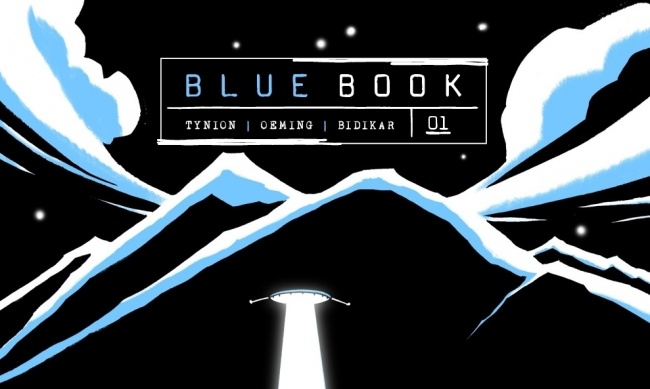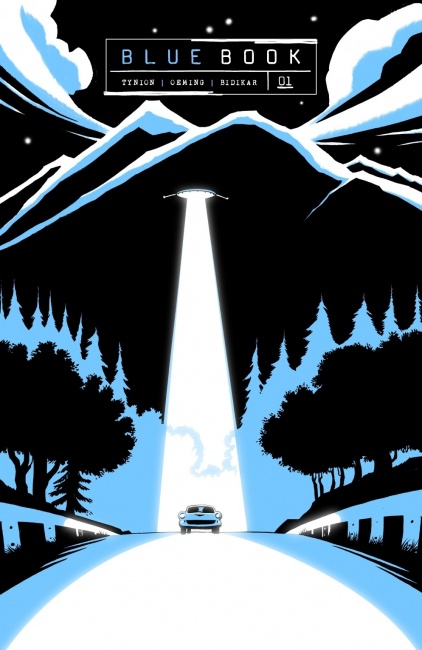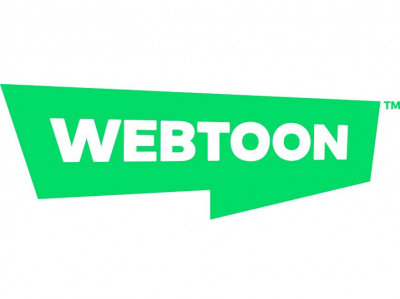If you were paying attention to comics news last week, you may have heard that a large gaggle of A-list comic creators including Jonathan Hickman, James Tynion IV, Scott Snyder, Scottie Young, Chip Zdarsky, Molly Ostertag and Saladin Ahmed, jumped ship to a new-to-comics online platform called Substack, where they will be producing creator-owned work on relatively generous financial terms (see “James Tynion IV Leaves Batman for Substack"). This isn’t unusual: the past couple of years have seen a steady percolation of creators making their bones on fan-favorite Marvel or DC titles, then trying their luck with creator-owned work offering greater control and upside, minus the risk of having a corporate publisher take their creation to the bank without cutting them in on the action (see “Can New Distribution Models Help Comic Creators Address Persistent Uncertainty?").
So, in a sense, last week’s news is a case of same story, new platform, and an unusually large and prominent group of folks taking advantage. These are the names that sell comics at retail, after all, and the fact that all of them will be doing new work online has raised some concerns in the industry. This feels disruptive, especially since it’s being driven by the buzzy flavor-of-the-month tech brand, Substack, which has already raised eyebrows for its impact on journalism.
What’s a Substack? Substack is a well-funded Bay Area tech startup founded in 2017 that’s been shaking up the world of online journalism by providing a platform for writers who are "too hot" for many publications due to their heterodox views on social and political issues and/or their strained relationship with the publishing establishment (Andrew Sullivan, Glenn Greenwald, Matt Yglesias and Bari Weiss are some of the names you might recognize that fall into this category), but still have a large audience. Whether you are of the view that people who are cancelled should have the decency to stay cancelled, or that they have a right to make a living if people are willing to pay to hear what they have to say, this particular contrarianism has become part of the Substack brand.
Substack attracts these folks using a novel method: they pay them. Substack offers headliners a choice between accepting a large up-front stipend (reportedly $250K in the case of Yglesias) or a generous slice of subscription revenues in the first year. Writers need to decide if they’re better off with the guaranteed money or taking their chances trying to max out readership. Either way, they retain all rights to what they produce. Being writers, they have mostly taken the money on offer as opposed to the spec deal, and in many cases, they turned out to underestimate their own earning power. There’s also now a "Pro" track with monthly payments in the form of "grants" recoupable against subscription revenues, which is apparently the deal that Tynion and the others are on.
Income to both the writers and the platform comes from subscriptions. Readers get a couple of freebies to try out a particular writer’s work, then have to subscribe at some monthly rate, typically a few dollars a month, to receive the latest missives via email.
Innovation or imitation. Substack has gotten a lot of buzz with this formula, but what exactly have they cooked up that is new, different or interesting?
They have individual writers publishing online to specific audiences rather than working through publications with editors, production and distribution departments. OMG, they’ve invented blogging!
They have a mechanism for fans to reward the creators they like by giving them a monthly subscription income. OMG, they’ve invented Patreon!
They allow their creators to keep the copyright on their work and pay them an advance against expected earnings that helps them get their projects started. OMG, they’ve invented traditional (non-comics) publishing!
And they’ve built their brand by attracting a rogues gallery of folks who have gotten under the skin of the guardians of the prevailing discourse. OMG, they invented trolling!
OK, maybe this stone soup approach to innovation is not terribly impressive, but Substack has managed to attract a lot of venture capital, and where there is money, there is always a way forward.
So what about comics? Substack decided to get into the comics space a few months ago and made a very smart, on-brand hire to spearhead the operation: noted Marvel Comics and Image Comics writer Nick Spencer. Spencer’s evangelism among the comic writing elite paid off last week with the mass announcement from the aforementioned group of superstars, each of whose deal would have been a headline in itself.
Scott Snyder, who just announced a deal with comiXology Originals for a bunch of new direct-to-digital series (see “What’s Behind ComiXology’s Power Move with the Scott Snyder Deal?”), is using Substack for an online writing class (OMG... Substack has invented the MOOC!). Last week, he explained the appeal of the platform for himself and presumably many of his colleagues:
...one thing to understand is that it's not just the people announced yesterday. It really is a seismic thing—you're going to see so many great creators from all areas of comics announcing newsletters and all kinds of projects on Substack over the next three months. So, just to give you a sense of why James and I. and some other people thought it was a good place for us to go to make things right now.
Obviously, we’re aware of the criticism. No platform is perfect. We’re in conversation with people at Substack internally, and I know they’re dedicated to making it a better place, as are we. But, ultimately, this initiative itself in comics beyond the platform as a whole, this specific project and mission is really about creator empowerment within comics. It's about injecting not just money but creative freedom into the lives of creators across the comic spectrum.
Tynion echoes these sentiments last week on his new Substack site:
I had all of these ideas for NEW creator owned comics that I wanted to build, but I didn’t have the money to build them all myself. After seeing the difference in back-end between comics I owned myself, and ones where I shared ownership with a publisher, I wasn’t interested in launching something big and new that I didn’t have control over with my partners... But some of the ideas that I had in mind were a little outside the box. Could I afford to experiment and test out some of the ideas I was most excited about without the income I was getting from my Batman titles?
When I got the Substack deal, my jaw pretty much fell out of my skull. I remember sending it to my lawyer asking if it could be real, because it was exactly the kind of offer I was dreaming would fall out of the sky and into my lap. And it was.
So, the math in my head started changing rapidly. And I knew what I had to do.
The missing piece. From the perspective of the creators, the appeal is clear. Substack is being extremely generous with rich people’s money to build a murderer’s row of comics creators to do the amazing projects they’ve always dreamed about, with full ownership, creative control and even an advance.
OMG! Substack has invented Tundra Publishing!
However, unlike Tundra, which published great, beautiful comics that spared no expense on production values even when maybe they should not have, Substack is publishing... jpegs. Obviously one thing Substack has not yet invented is Guided View or Webtoon’s vertically scrolling interface.
Perhaps this is because Substack was conceived as a word-oriented platform, and their view of the comics space is notably writer-centric. What’s for sale here is primarily whatever cool stories that Snyder, Zdarsky, Tynion and company have cooked up. The artwork gets the most rudimentary possible presentation, and no thought is given whatsoever to the physical quality of the product or the collectability – at least not until the creators, who retain the publishing rights, decide to release the story as a trade or serialized print publication after the fact.
If you are a comics fan, what exactly is the advantage here? Yes, you are getting new work from popular creators. But is there some pent-up demand for reading digital comics a page at a time on your email for $7 a month? Even if you prefer digital comics to the dead-tree version, there are other options and arguably better options that put the reader experience on a par with the creator experience.
Maybe there’s room in the market for a few iterations of Substack’s approach. Brian K. Vaughan has done pretty well with Panel Syndicate, for example. But it’s not clear to me how this scales beyond a couple of superstar creators capitalizing on built-up fan affection for work they’ve done on properties that give them a pretty tall set of shoulders to stand on.
I’d like to be wrong about this, if only because anything that gives comics creators dignity, control and a stable income is inherently a positive development for the business. However there just seem to be so many other ways this could work that would deliver a much better experience for fans, greater respect for the medium, and greater opportunities for retailers.
The opinions expressed in this column are solely those of the writer(s), and do not necessarily reflect the views of the editorial staff of ICv2.com.
Rob Salkowitz (@robsalk) is the author of Comic-Con and the Business of Pop Culture.

Column by Rob Salkowitz
Posted by Rob Salkowitz on August 16, 2021 @ 1:43 pm CT
MORE COMICS
VIZ, Ize Press, Graphix Dominate the Charts
April 19, 2024
New and evergreen titles from VIZ Media, Ize Press, and Graphix take up almost all the slots in the March Top 20s.
Adult Sales Sag; 'Dog Man' Kicks Kids' Sales Higher
April 19, 2024
Sales of the Adult Top 20 were down compared to March 2023, but a new Dog Man release helped bump sales up on the Kids' chart.
MORE COLUMNS
Column by Rob Salkowitz
April 15, 2024
This week, columnist Rob Salkowitz deconstructs recent discussion of WEBTOON"s creator contracts to look at the issues around creators' rights when there's a lot at stake.
Column by Scott Thorne
April 15, 2024
This week, columnist Scott Thorne looks at the recent Eventlink crash during prereleases, and the survey Wizards of the Coast ran about merch based on their games.









